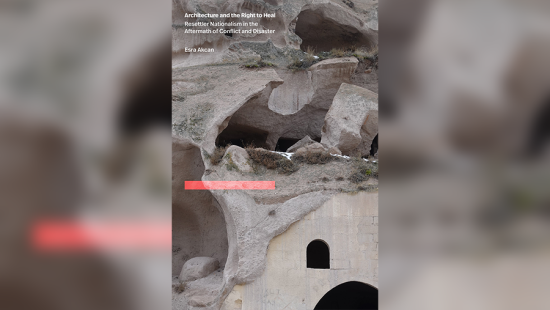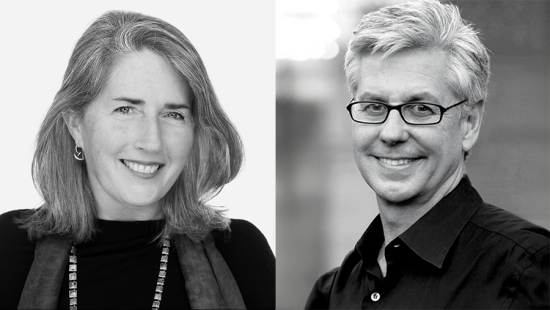Reimagining Informal Housing in Mathare, Kenya
Negotiating the challenges of safe, reliable, and affordable housing, Cornell AAP architecture and planning students collaborated with Slum Dwellers International and local residents to explore alternative housing design and construction strategies for Mathare, an informal settlement in Nairobi, Kenya.
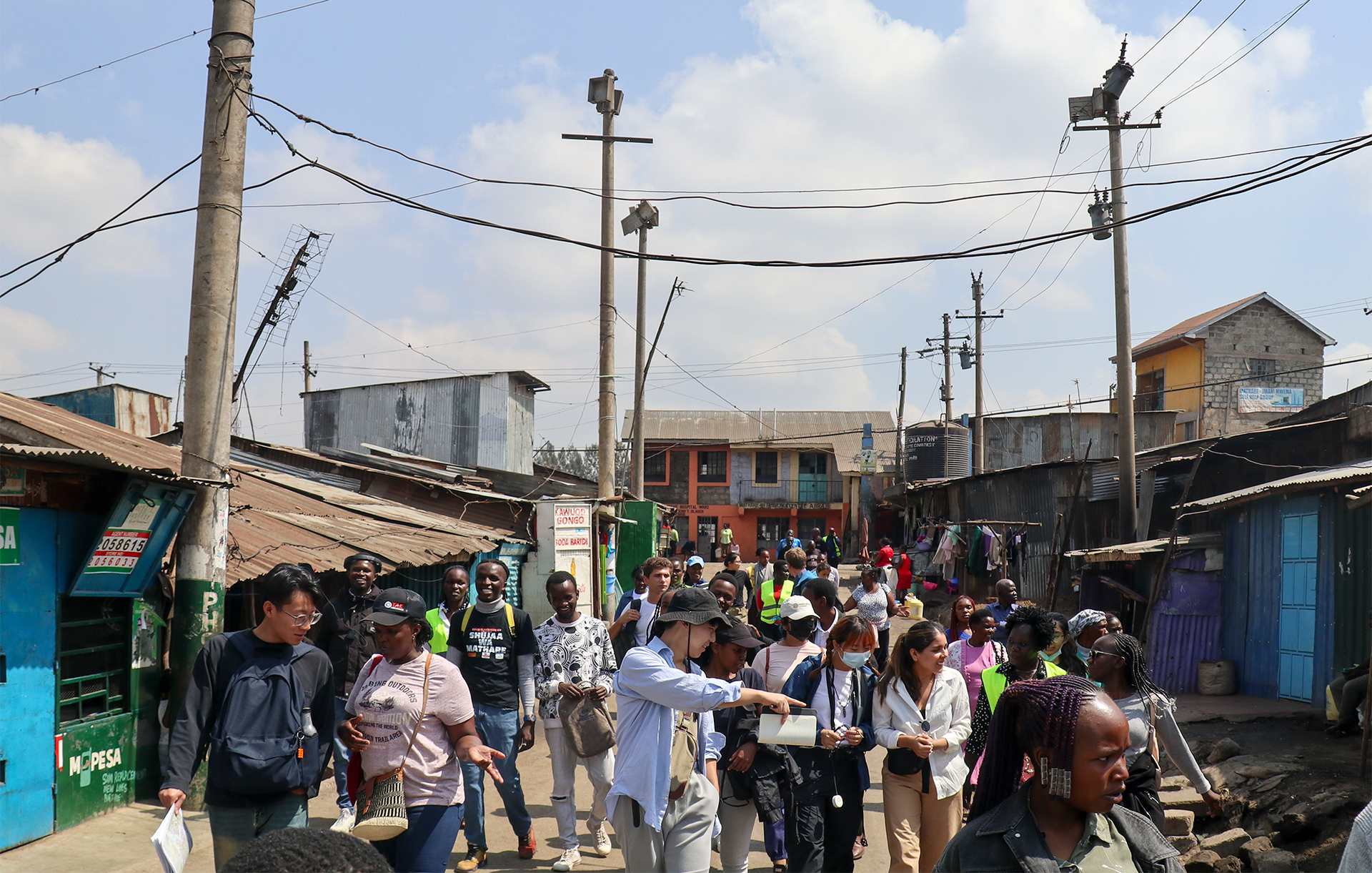
Cornell students walked through Mathare 4B, an informal settlement in Nairobi, with community members, colleagues from Slum Dwellers International–Kenya, and peers from the University of Nairobi as part of a site visit. Claire Fisher / AAP
In collaboration with the Cornell Mui Ho Center for Cities, Slum Dwellers International, and the University of Nairobi, Informal Futures: Housing in Mathare, Kenya, a fall 2024 design option studio led by Architecture Assistant Professor Felix Heisel, invited Architecture and City and Regional Planning students to address the challenges and opportunities presented by informal housing — specifically focusing on Mathare, the oldest and second-largest informal settlement in Kenya. In response to growing population density, housing insecurity, and inadequate access to core urban infrastructure and services, the students worked in partnership with residents and organizations on the ground to reimagine housing that would provide resilient and dignified living spaces.
These explorations included fieldwork in Nairobi in late September, during which students observed life in the settlement firsthand.
The studio was made possible with the financial and administrative support of the Cornell Mui Ho Center for Cities and the knowledge and connections shared by Slum Dwellers International–Kenya throughout the course, site visit, and project review process.
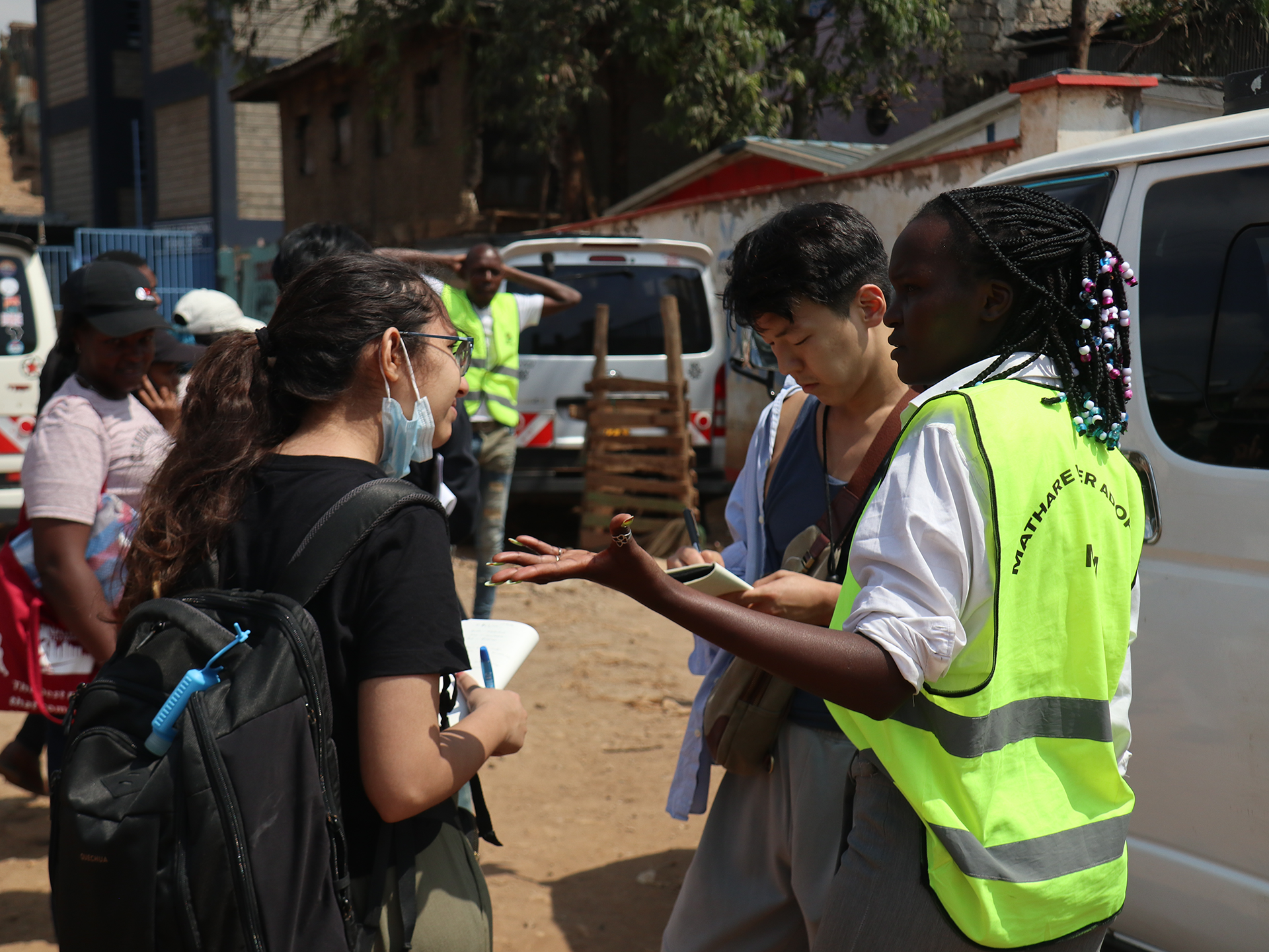
Medha Kulkarni and Ted (Tea Woo) Lim (both M.R.P. '25) listen to a community member share their experience of the spring 2024 flooding and evictions in Mathare 4B, and how that has impacted residents. Claire Fisher / AAP
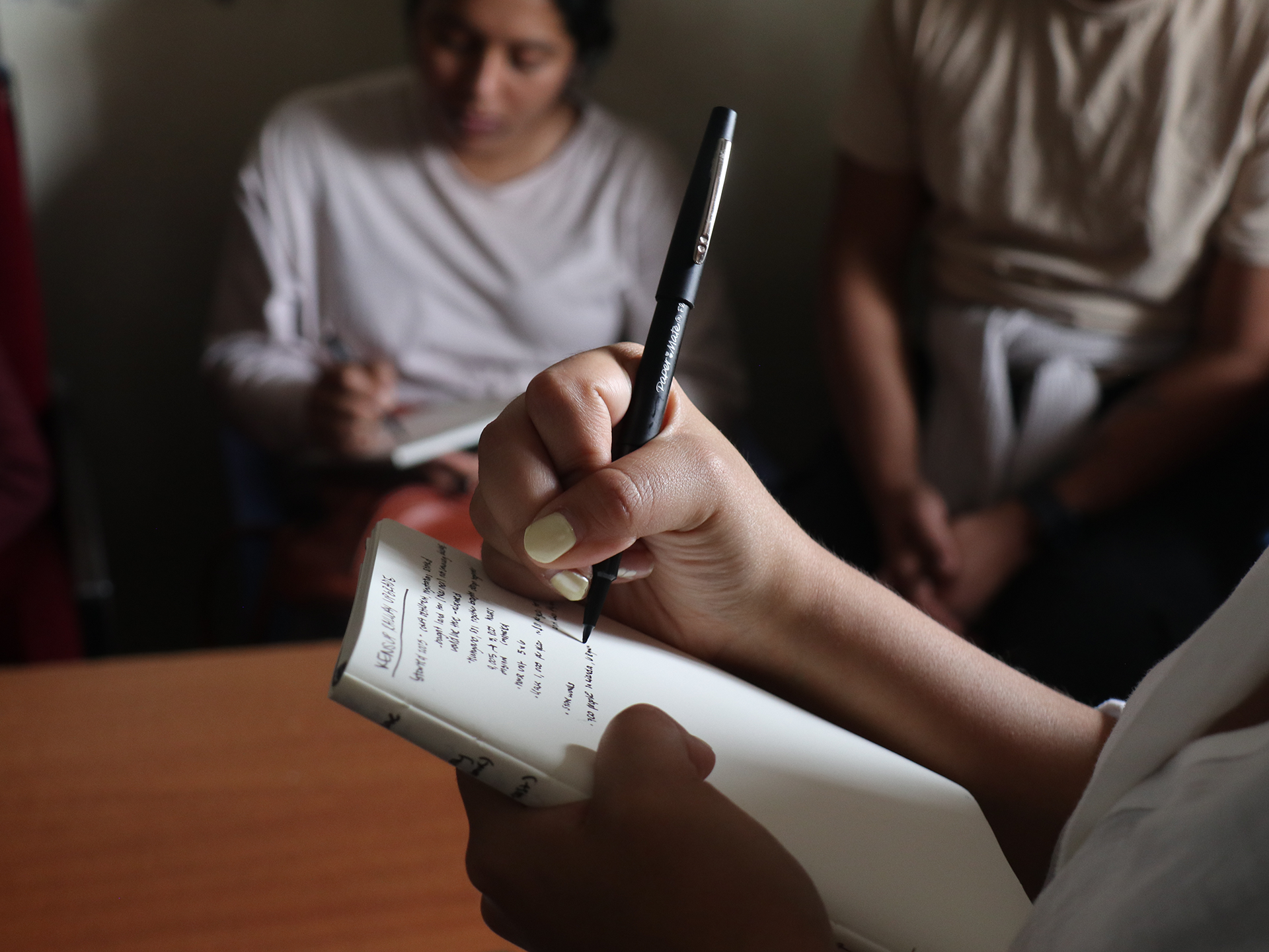
Alejandra Domenica Siguenza Polo (B.Arch. '25) takes notes during a site visit to the informal settlement of Kibera, where students met with community elders to learn about their railway housing structures, an alternative to the approaches often used in Mathare. Claire Fisher / AAP
International studio courses are not easy, but they offer the most incredible learning opportunities. I am grateful that faculty, like Assistant Professor Heisel, are willing to take on this 'heavy lift' and that we have the most amazing partners. Slum Dwellers International have the local relationships that allow students unprecedented access to the sites and interaction with residents. — Professor Victoria Beard, Director of the Cornell Mui Ho Center for Cities
Know Your City TV, powered by Slum Dwellers International, created an overview video covering the five days of cross-disciplinary activity. View the full film.
The planning studio enabled the students to apply their knowledge in a practical setting while gaining insights into the challenges faced by slum dwellers. This hopefully will set a precedent in Kenya to adopt iterative and participatory approaches, fostering a collaborative environment where students / planners and slum communities work together throughout the planning process. I am hoping the designs done by the students will lead to tangible projects on the ground and will also help influence local policies. — Joe Muturi, Chair of Slum Dwellers International (SDI)
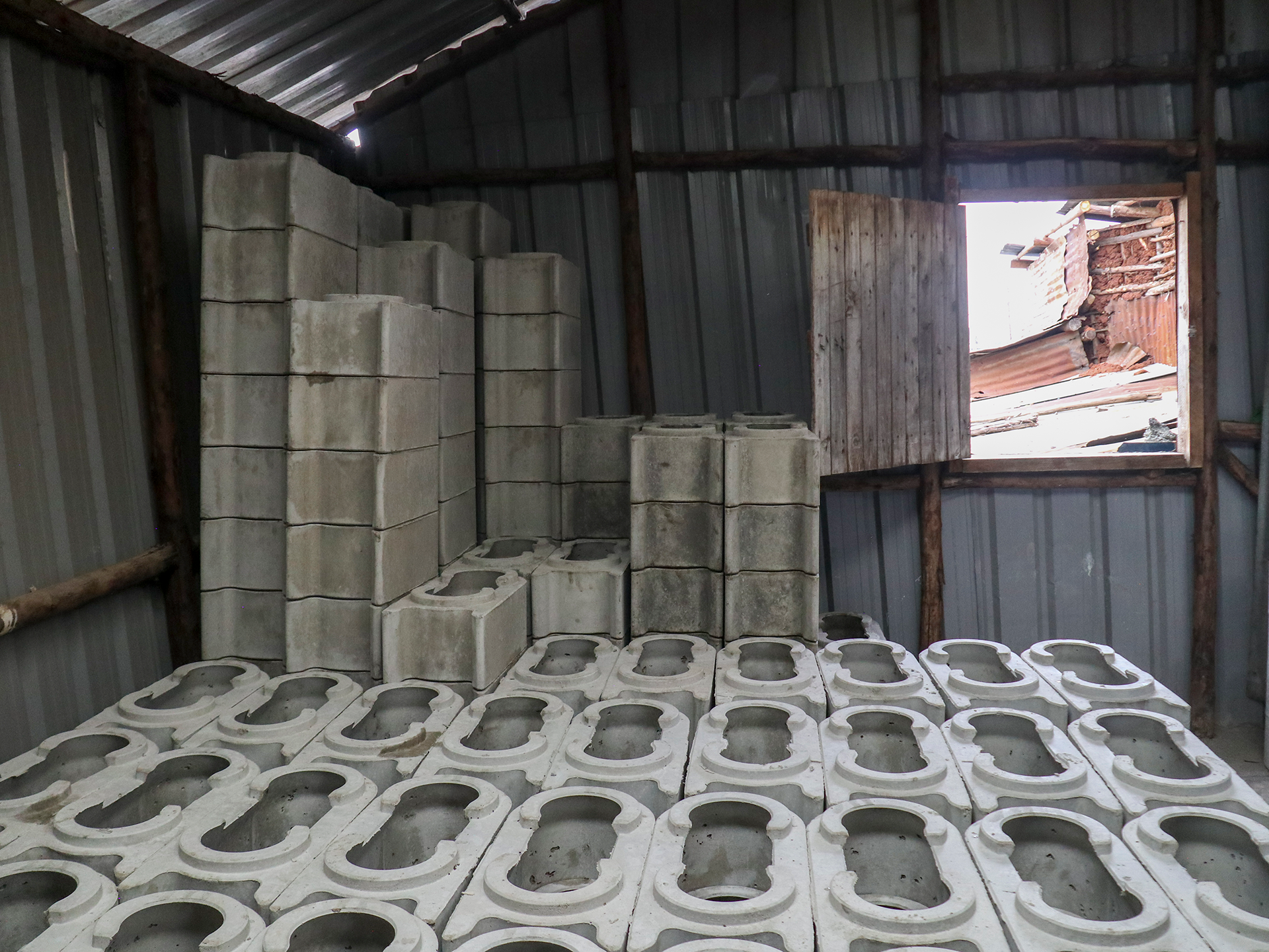
During their field tours, students visited material producers Start Somewhere Kenya in Kibera to see how the organization's innovative TwistBlocks, a modular, reusable, cost-effective, and fire-safe concrete block-building system, were being made. Finished blocks stored here are stacked and ready for use in construction. Claire Fisher / AAP
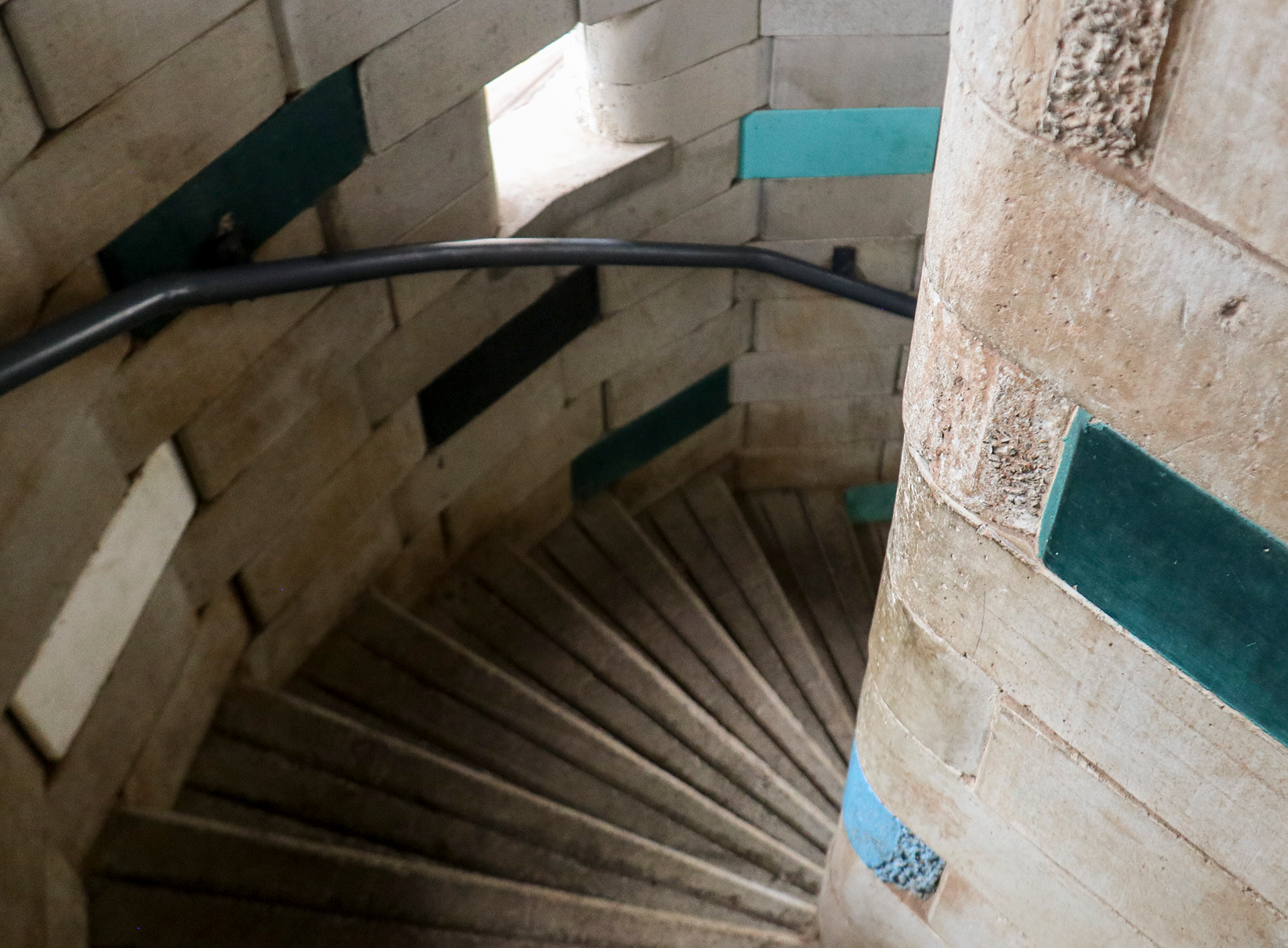
The TwistBlocks were used to construct the Global One Primary School in Kibera, which offers learning space for 225 students.
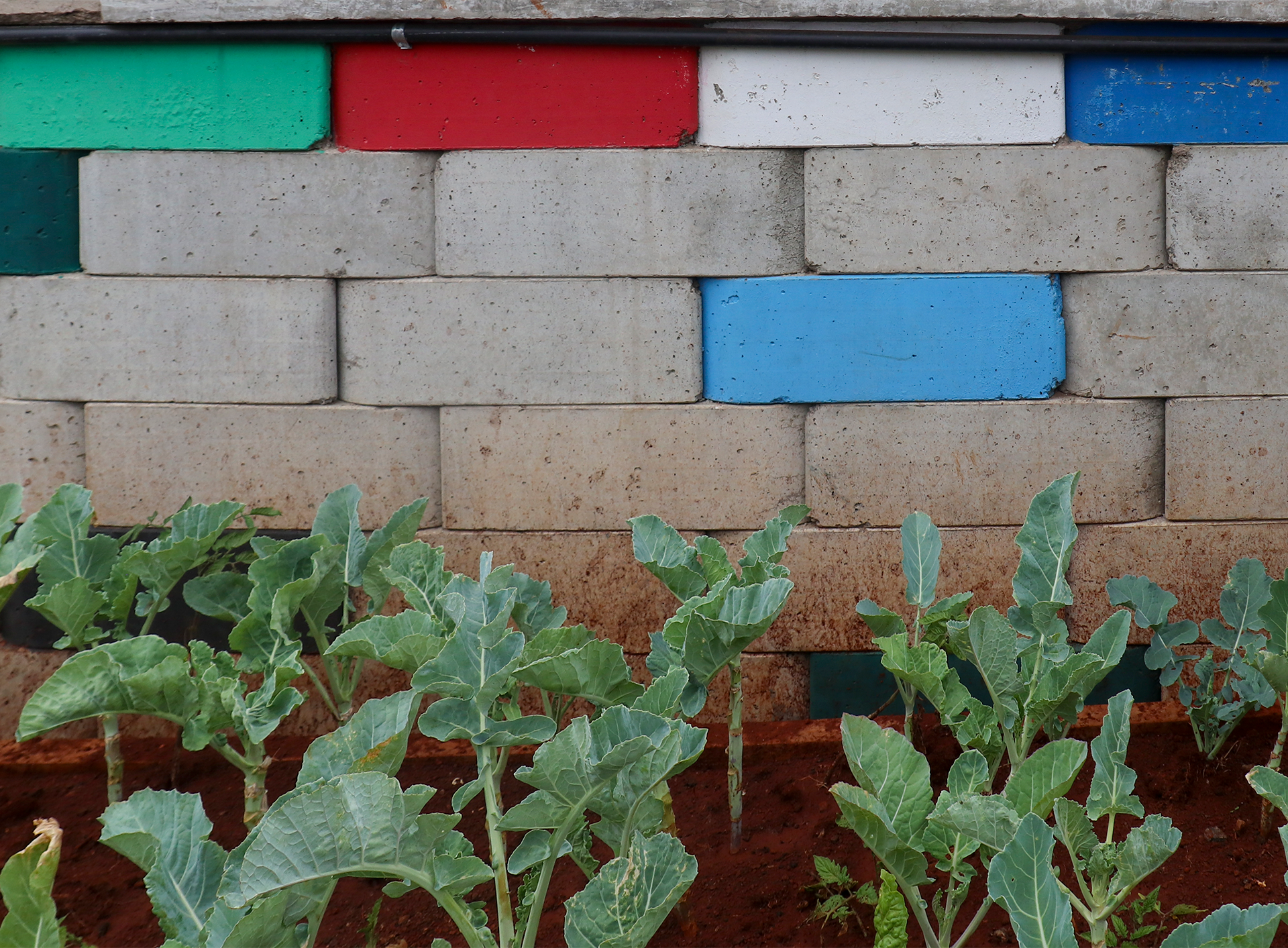
Stairs lead up to a rooftop garden and views over Kibera. Both images Claire Fisher / AAP
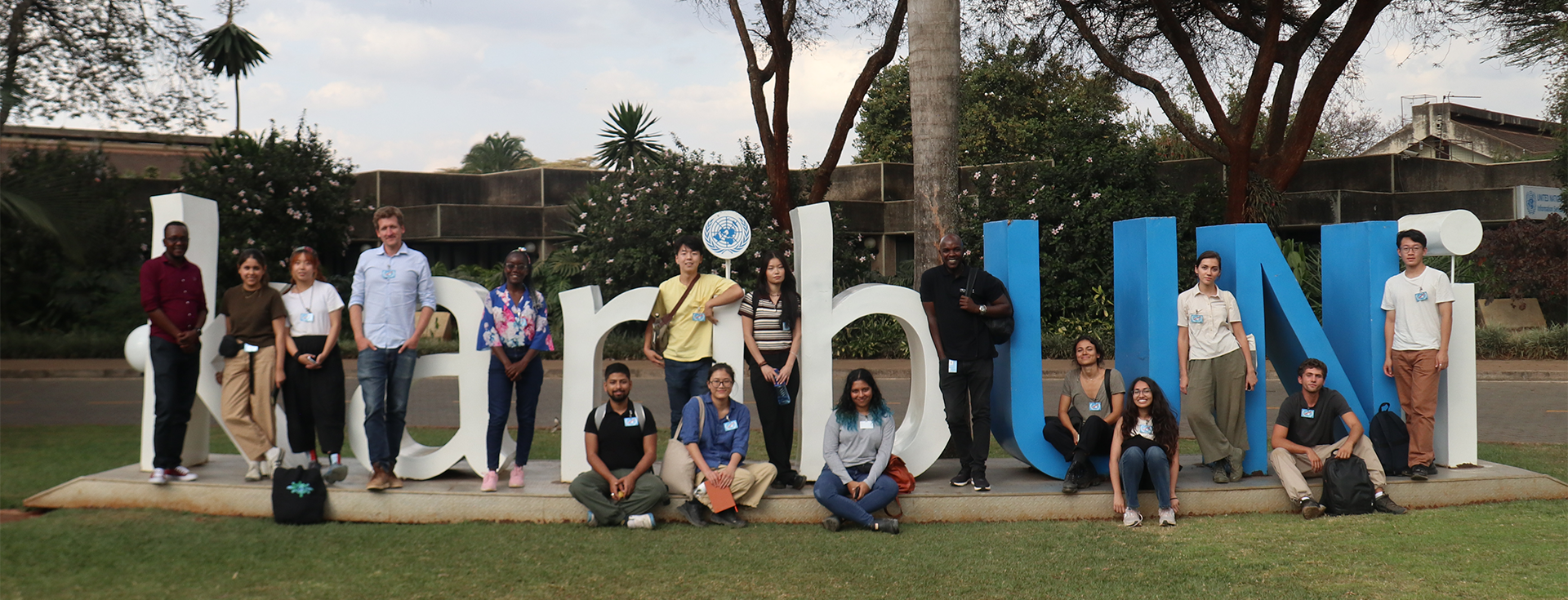
Students visited UN-Habitat to talk to experts in the Human Settlements Program, which further informed their understanding of the studio project. Claire Fisher / AAP
I'm truly grateful for the opportunity to meet and talk with the residents of Mathare 4B. Even during our short visit, I learned so much about their way of living. After returning to Ithaca, I was fortunate to reconnect with a local filmmaker from Mathare, and we decided to collaborate on a documentary. Through ongoing Zoom meetings, I gained a much deeper understanding of the village and what home means. This collaboration not only informed my studio research but also enhanced my spatial analysis through the lens of filmmaking. — Ziyan Jiang (B.Arch. '25)
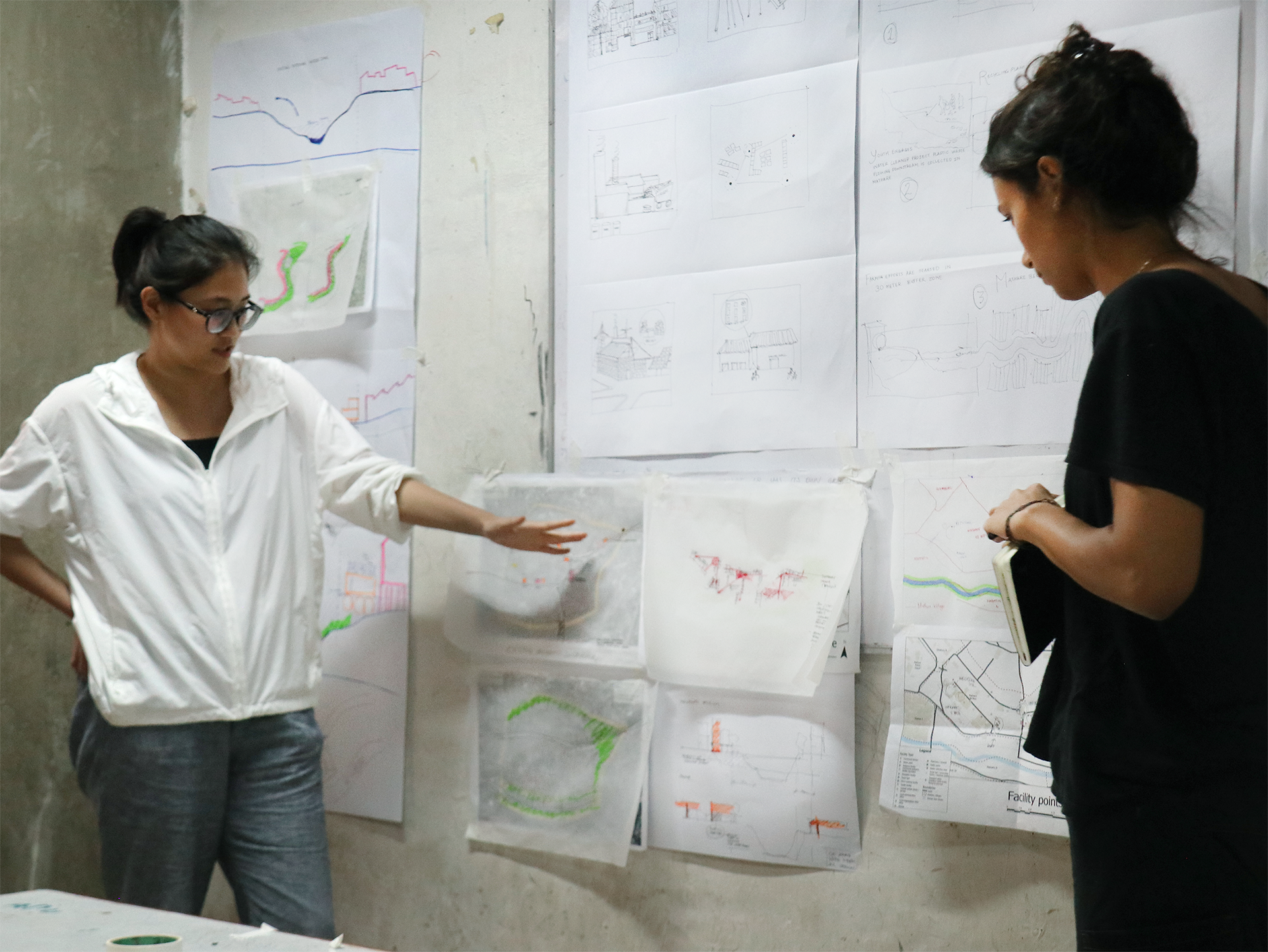
Chi Zhang and Idil Derman (both B.Arch. '25) present initial design concepts at the end of the week to a group of community members. Claire Fisher / AAP
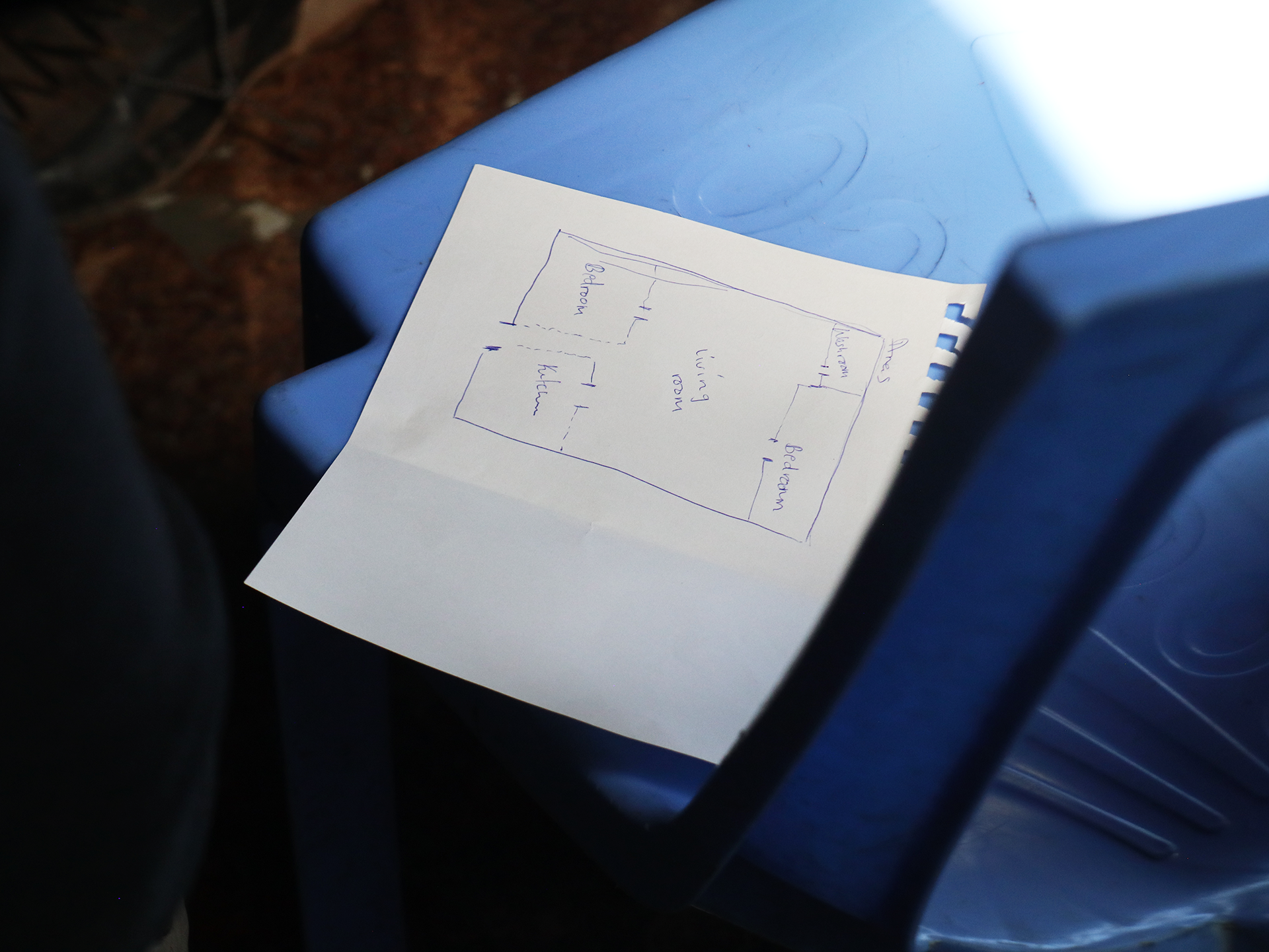
A concept sketch of a dwelling layout after conversations with community members. Claire Fisher / AAP
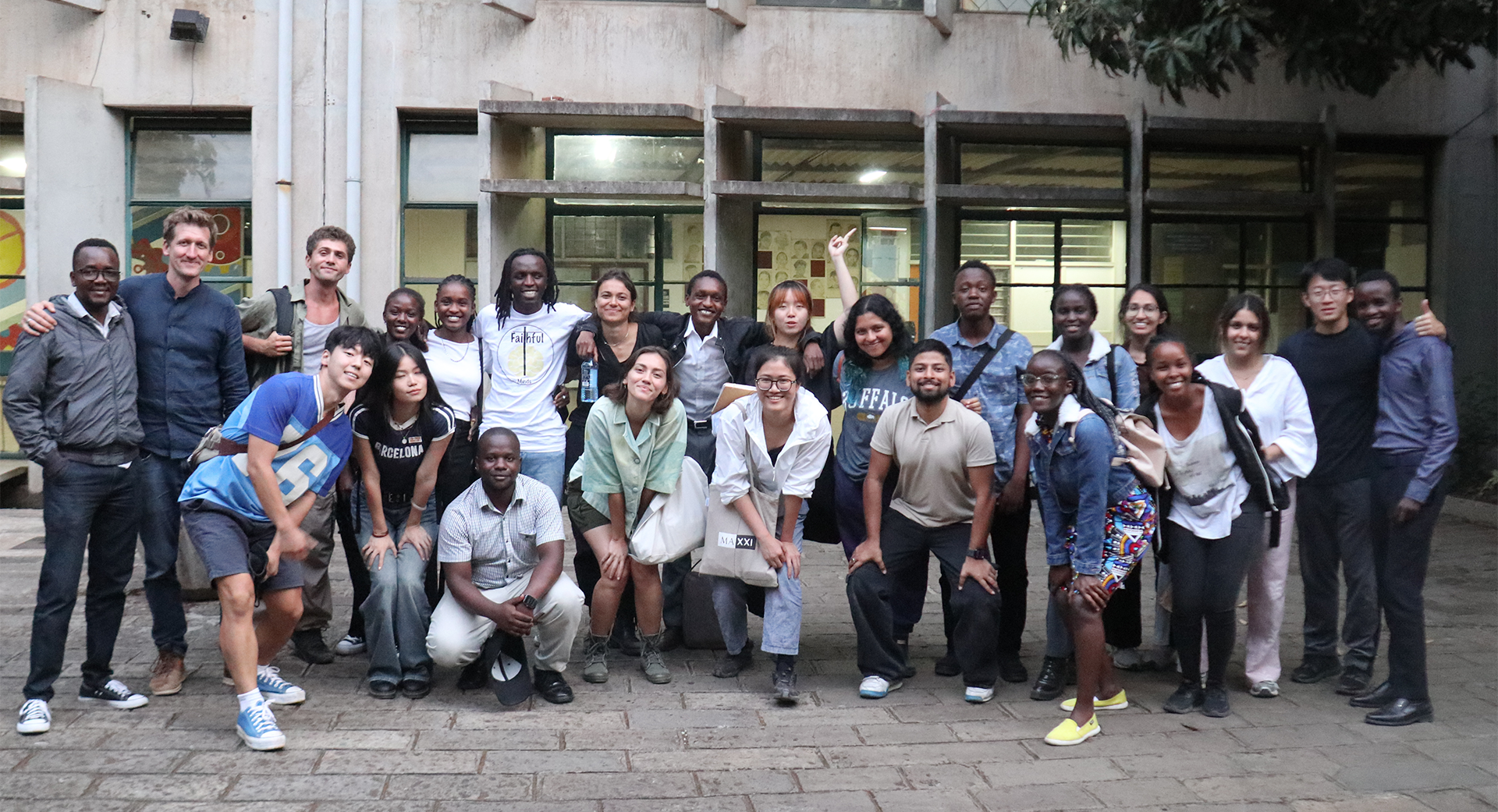
Group photo with colleagues from SDI and students from the University of Nairobi after their presentation to the community at the University of Nairobi. Claire Fisher / AAP
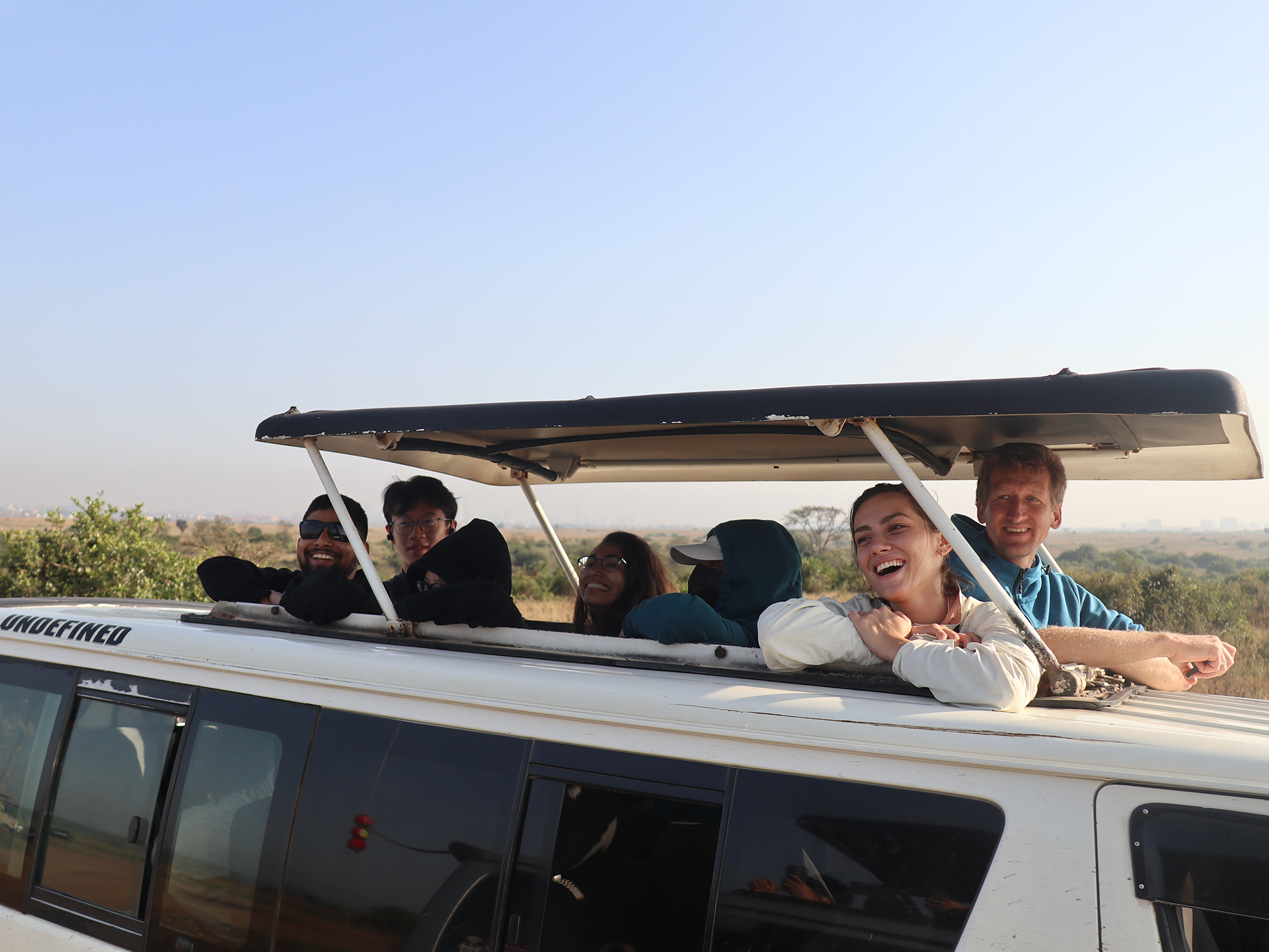
Safari trip to Nairobi National Park on the studio's last day in Kenya.
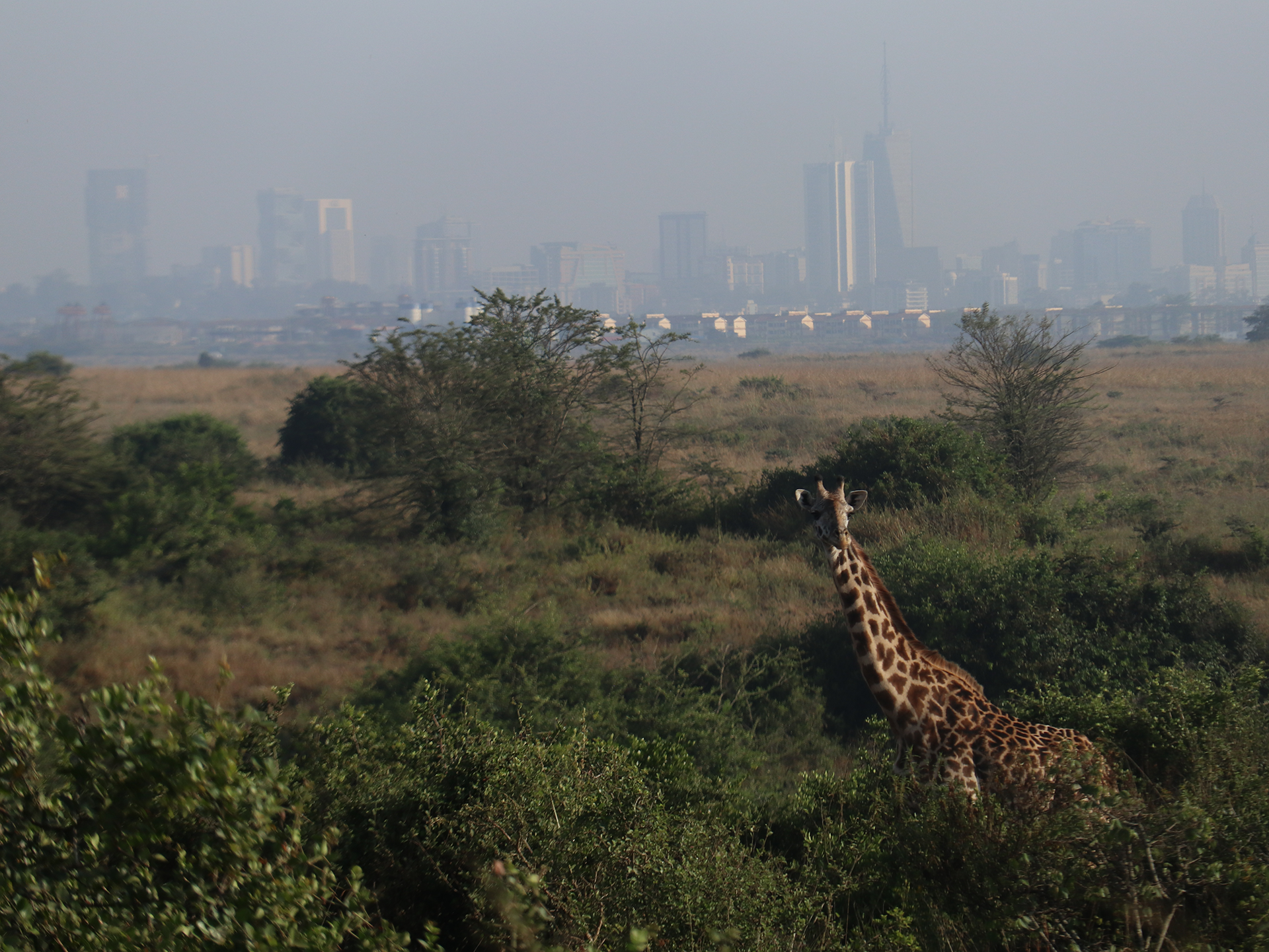
The 45-square-mile park is located just south of Nairobi and is home to a wide variety of species, including giraffes, rhinos, lions, zebras, wildebeest, and ostriches — all of which the students saw on their tour! Both images Claire Fisher / AAP
The primary goal of the studio collaboration was to identify and visualize a series of complimentary housing strategies and associated typologies and materials to support the local community in their conversations with local stakeholders and decision-makers. The cross-disciplinary approach of the studio allowed the students to address the complex local conditions across scales from infrastructure and services to housing typologies or material sourcing and assembly. — Felix Heisel, Assistant Professor of Architecture
Back on campus, the students continued to explore housing ideas across scales.
In mid-October, Assistant Professor Felix Heisel introduced the goals of the coursework to AAP guests and students presented some of their early ideas after their return from Nairobi. Anson Wigner / AAP
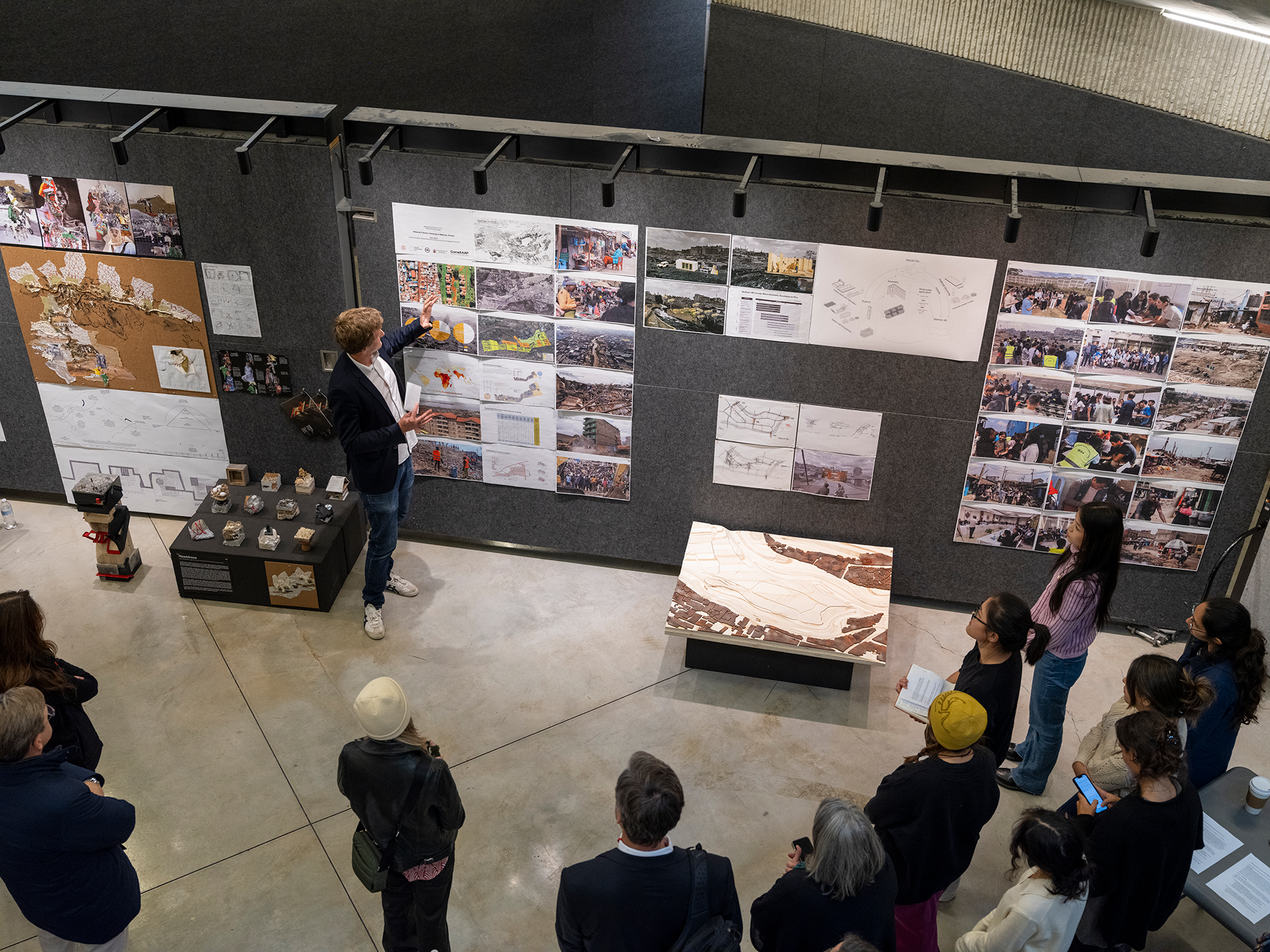
In mid-October, Assistant Professor Felix Heisel introduced the goals of the coursework to AAP guests and students presented some of their early ideas after their return from Nairobi. Anson Wigner / AAP

Work presented during the studio's November mid-term review. Anson Wigner / AAP
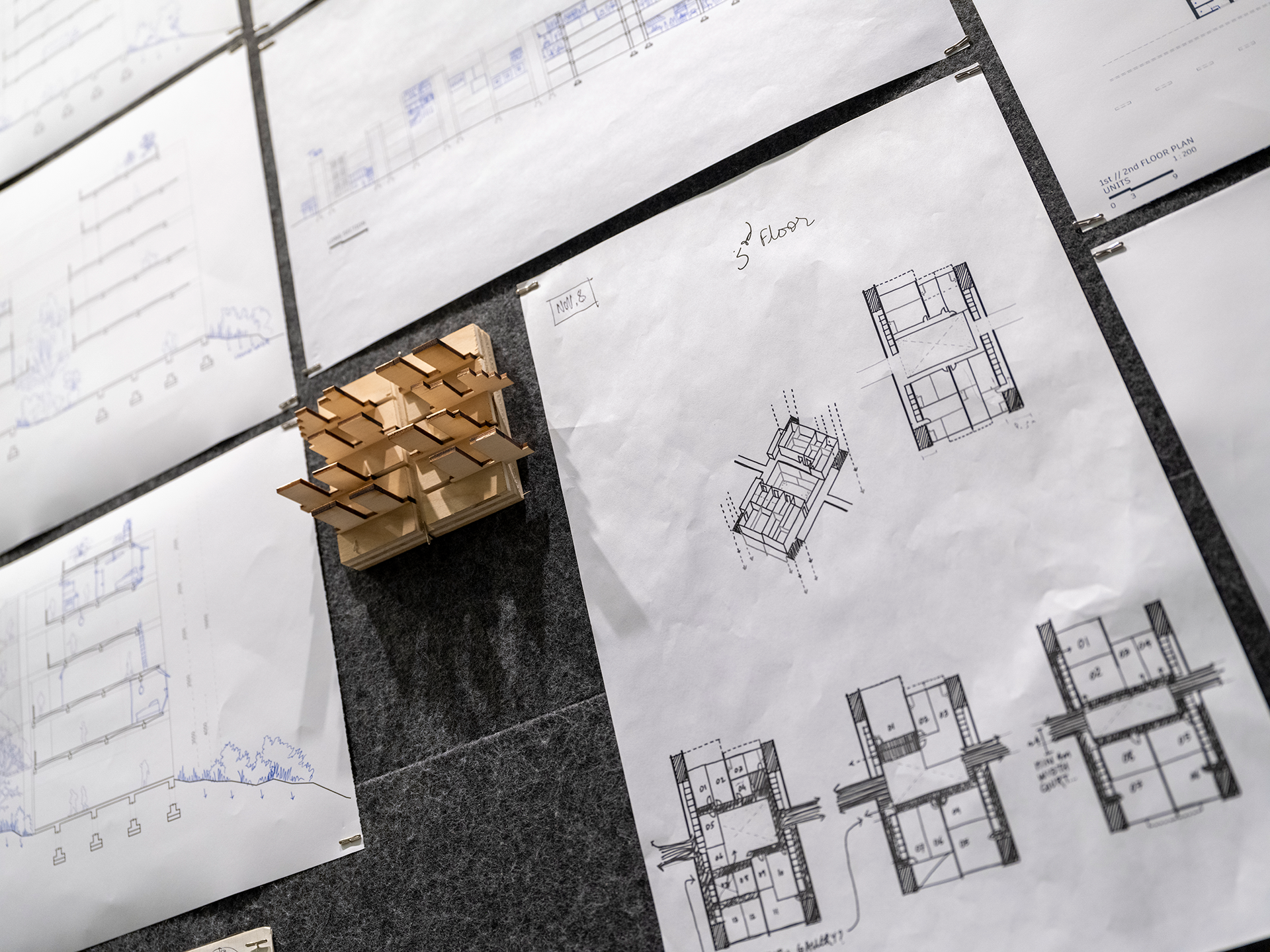
Work presented during the studio's November mid-term review. Anson Wigner / AAP
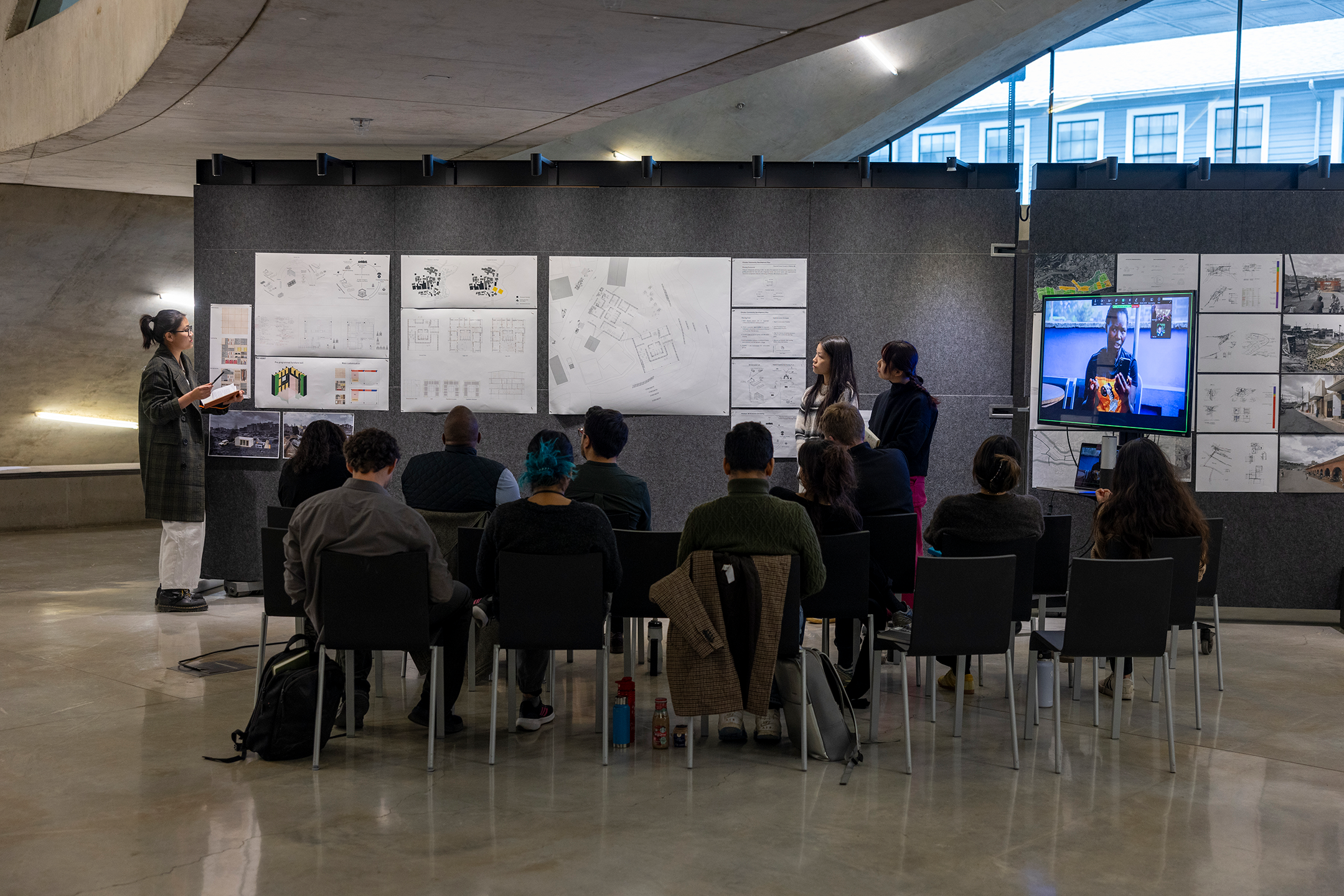
In mid-October, Assistant Professor Felix Heisel introduced the goals of the coursework to AAP guests and students presented some of their early ideas after their return from Nairobi. Anson Wigner / AAP
During the final presentation, students shared four upgrading strategies addressing aspects such as local and circular material innovations, infrastructure and service provision, urban acupuncture, workforce development, and housing density and flexibility. Review panel guests included Kristine Stiphany (University at Buffalo), Nathan Williams (Syracuse University), Joe Muturi (SDI–Kenya), Jennifer Birkeland (CALS), and Manuel Bouzas (AAP).
Our aim is to provide every home here with ambient light, ventilation, and movement while ensuring safety, privacy, sanitation, freedom, and the same sense of community networks through all the floors. — Vibha Sarangan (M.S. AAD '25)
Work by Danel Donaeva (B.Arch. '25), Chenxi Li (M.S. AAD '25), and Ted Lim (M.R.P. '25). The project provides circulation, sanitation, and structure within a central wall constructed from interlocking adobe blocks, allowing users maximum flexibility in the construction and arrangement of their individual housing units. Anson Wigner / AAP

Work by Idil Derman (B.Arch. '25), Medha Kulkarni (M.R.P. '25), and Alejandra Domenica Siguenza Polo (B.Arch. '25). Located in hotspots of the settlement fabric, the project proposes the construction of four seeds (bridge, workshop, market, park), each providing essential services to the community. Anson Wigner / AAP
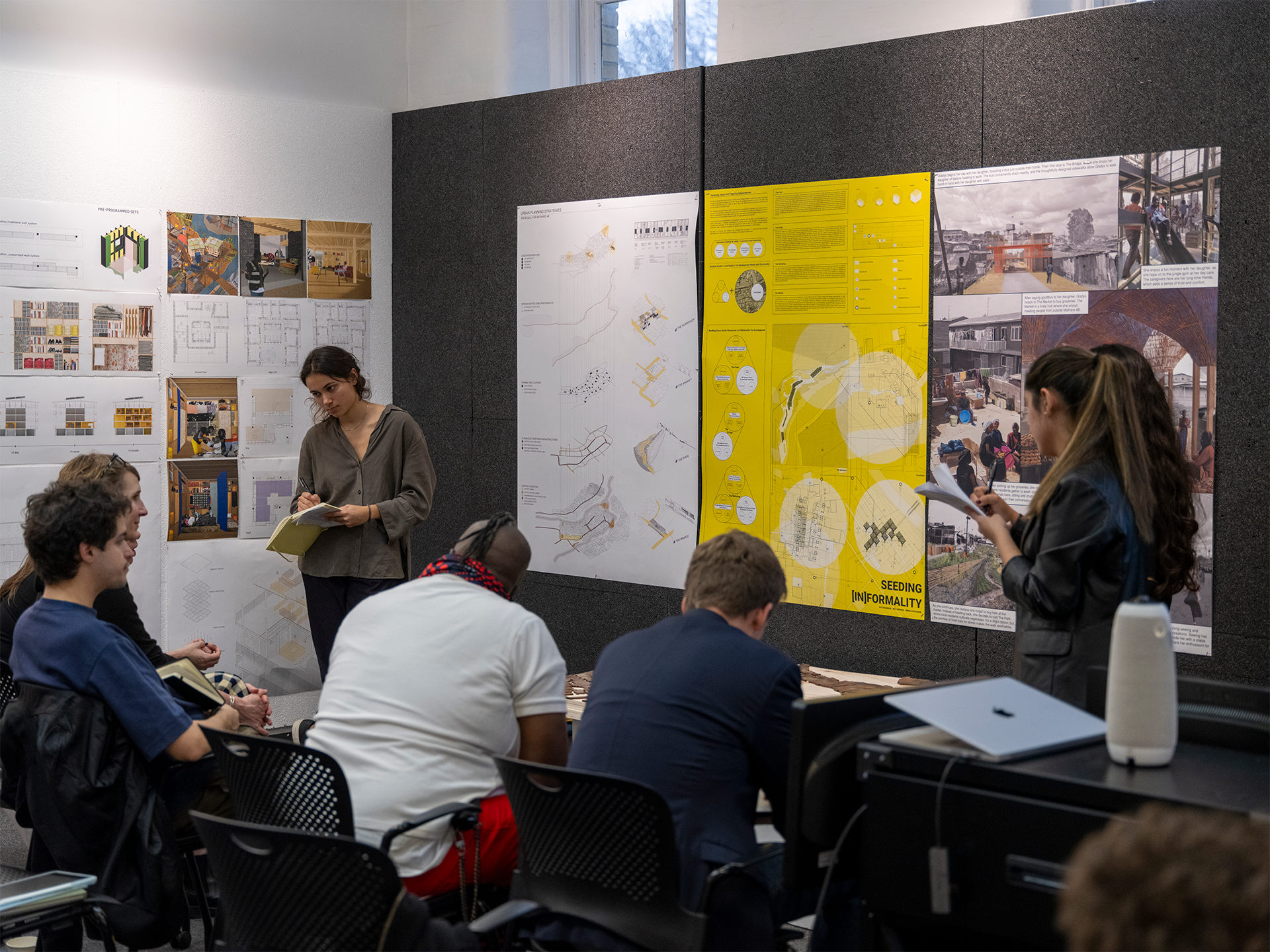
Work by Nicole Guo (M.R.P. '25), Ziyan Jiang (B.Arch. '25), and Chi Zhang (B.Arch. '25). The project capitalizes on aspects of mass customization in the construction of dense housing blocks from locally sourced industrial by-products and wastes along the riparian zone. Anson Wigner / AAP

Work by Adwait Joshi (M.R.P. '25), Jasper Owen (B.Arch. '26), and Vibhavari Sarangan (M.S. AAD '25). Initiated by the alignment and community-led construction of sewer lines, the project builds service walls for water capture and management, providing the necessary structure and framework for the vertical expansion of Mathare 4B. Anson Wigner / AAP
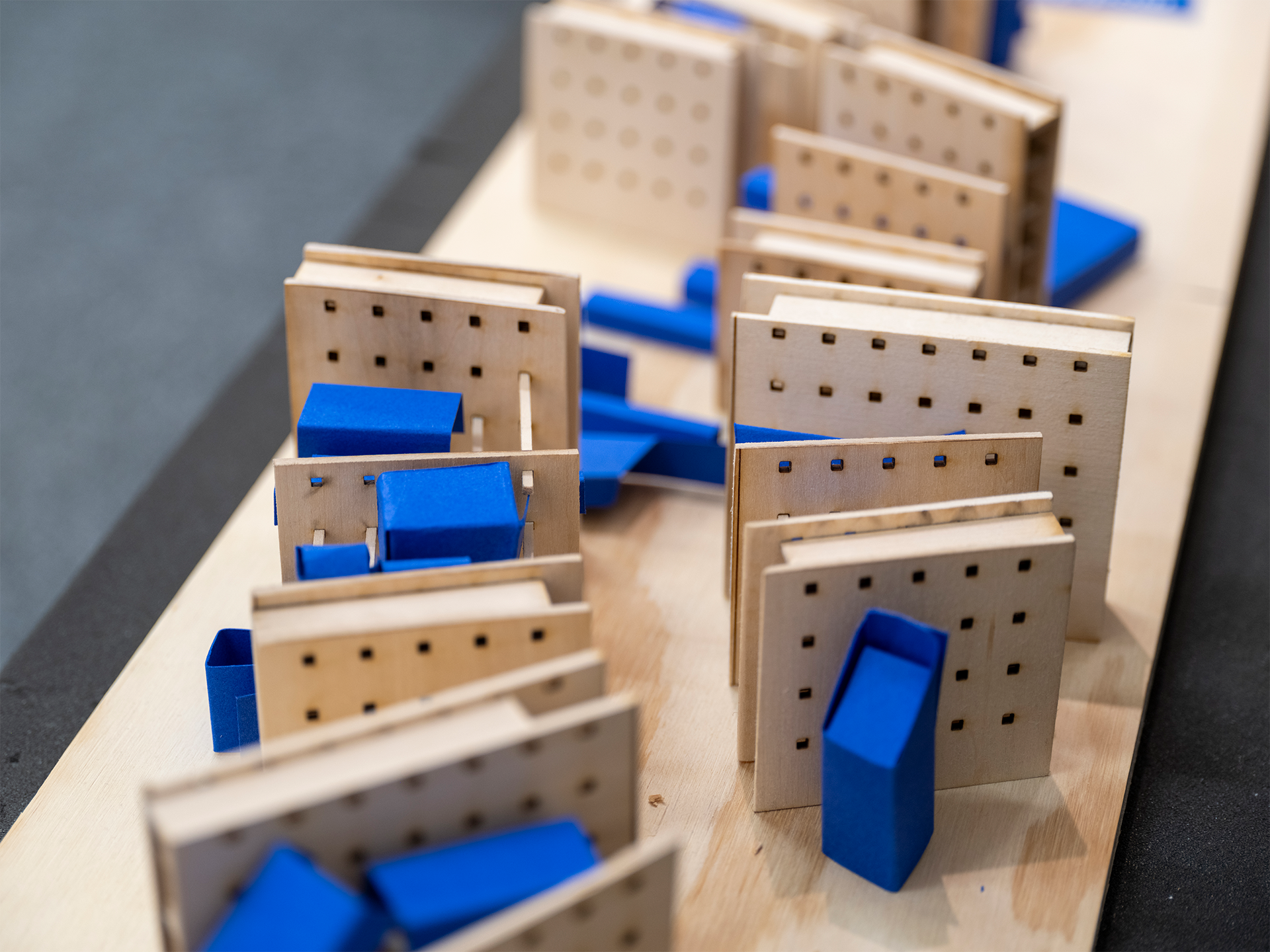
Work by Danel Donaeva (B.Arch. '25), Chenxi Li (M.S. AAD '25), and Ted Lim (M.R.P. '25). The project provides circulation, sanitation, and structure within a central wall constructed from interlocking adobe blocks, allowing users maximum flexibility in the construction and arrangement of their individual housing units. Anson Wigner / AAP
All four projects in the carousel above were presented as complementary upgrading strategies in the same site model, providing a catalog of options for the continued conversation with the residents and community organizations on the future of Mathare 4B.
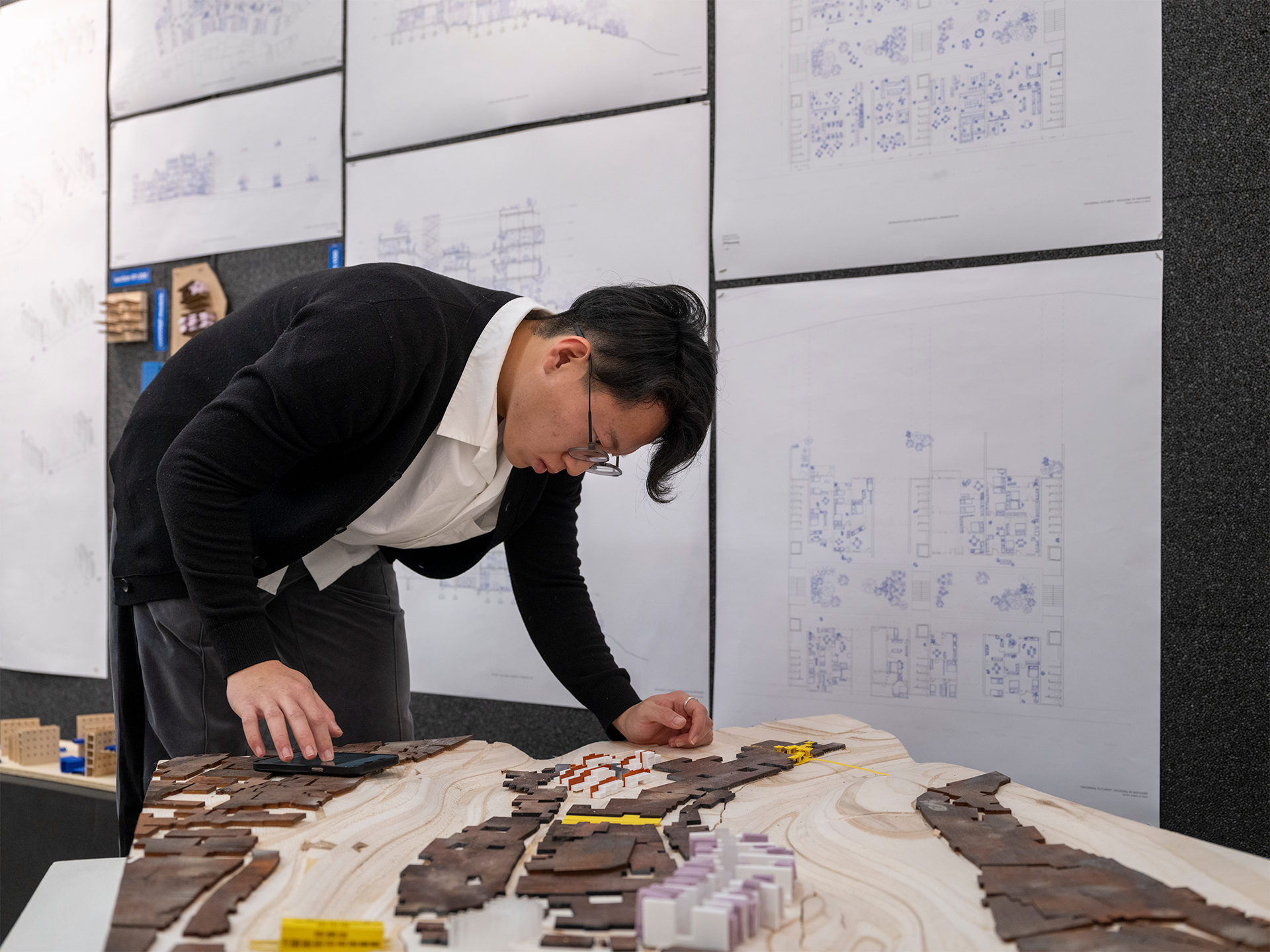
Chenxi Li (M.S. AAD '25) setting up. Anson Wigner / AAP






